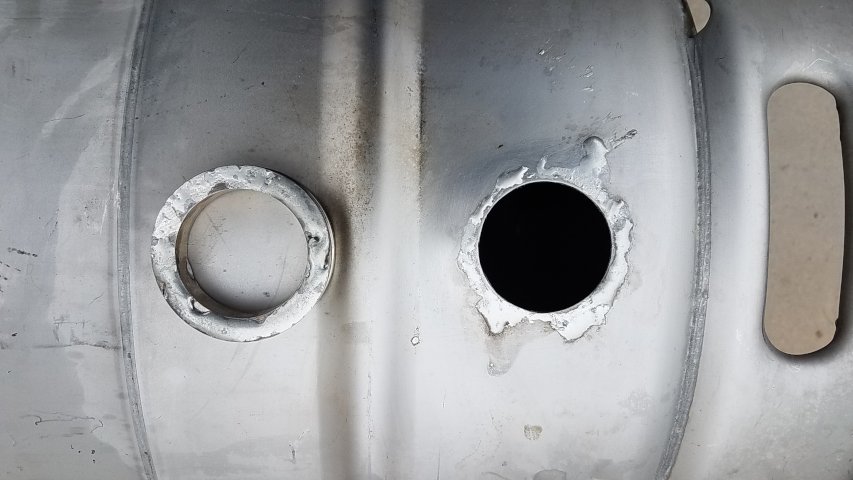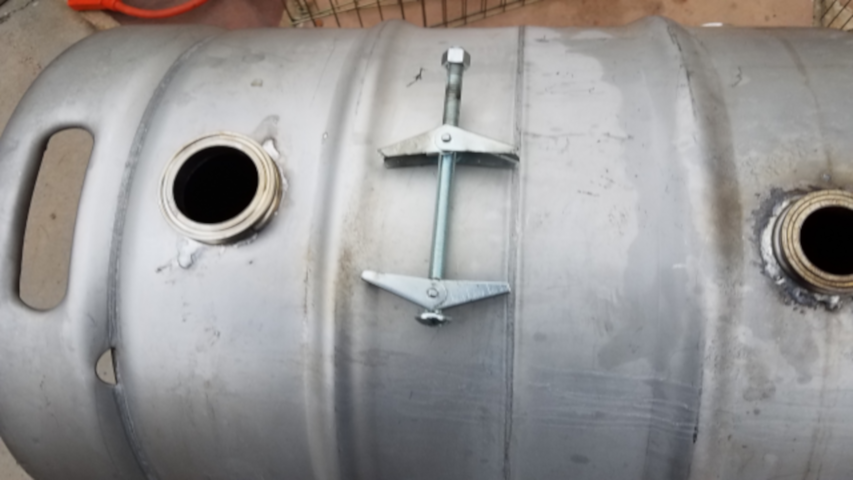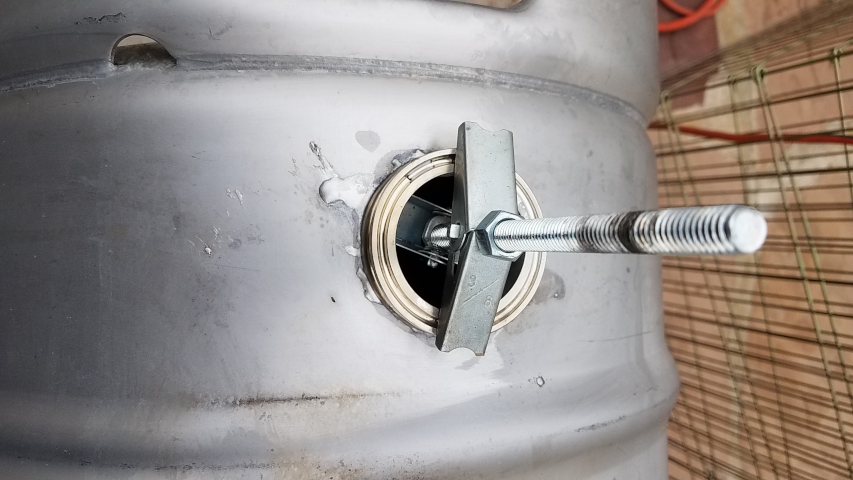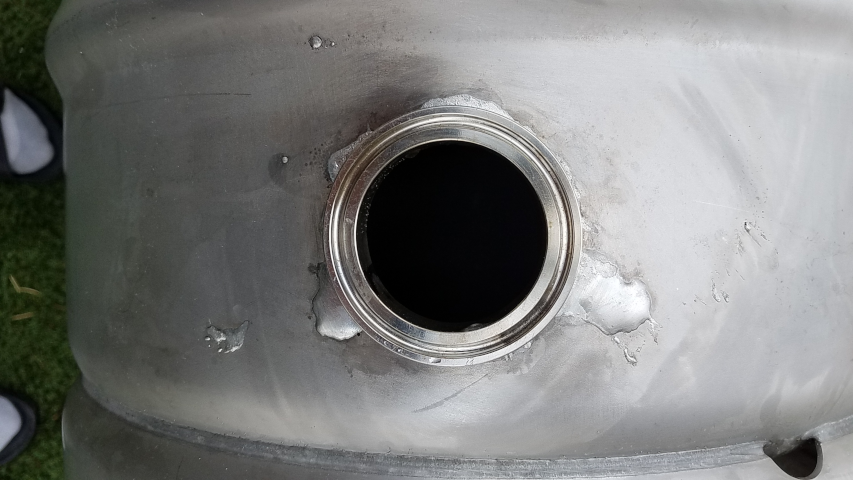2″ Silver-Soldered Triclamp Port
I was getting tired of disassembling my setup every time I wanted to add liquid.
I happened to have a 2 inch radiused TC flange from Bobbie of BrewHardware.
The flange is made to be silver-soldered to the side of a kettle, and also happens to fit on the keggle that is my electric boiler.
Previous experience has lead me to the following technique:
Cut out a 2″ hole using carbide hole saw. Clean up any sharp edges, then use sandpaper or a dremel tool to sand off the passivated coating on both the keg and the radiused side of the flange. Finally, clean everything up thoroughly (I use acetone.)
Using liquid flux and 4% to 6% silver-bearing solder. “tin” the two surfaces. This should be done in a well-ventilated area, as the flux gives off hydrochloric acid fumes as it’s heated. After allowing the surfaces to cool, wipe off any residual cruft with a damp rag. The results should look something like this:

I’ve made a device to help hold the two parts together using two 3/8″ molly bolts that have had the threads drilled out and a carriage bolt and nut. The result looks like this:


Now add a little more flux and slowly apply heat to the surrounding area and finally the two parts. You should see the solder start to flow around the flange. If it looks like an area isn’t flowing properly, you can carefully add a few drops of flux to the affected area. The flux is going to sputter and boil so don’t breathe the fumes.
Allow everything to cool, clean it up with a wet rag, and then scrub the area with a paste of Barkeeper’s Friend to clean and re-passivate the steel. Here’s the final result:

If you’re really anal about “clean and pretty” (I’m more interested in it working than how it looks, You can use a dremel tool to remove any excess solder.
Finally, I button up all of the ports, fill the keg with water, and let it sit for a while, periodically checking for leaks.
The nice thing about this method is that if you bork it up, simply reheat the surfaces, separate the two, clean and re-tin, and try again. I’ve only had to re-do a job one time after I started using this technique.
